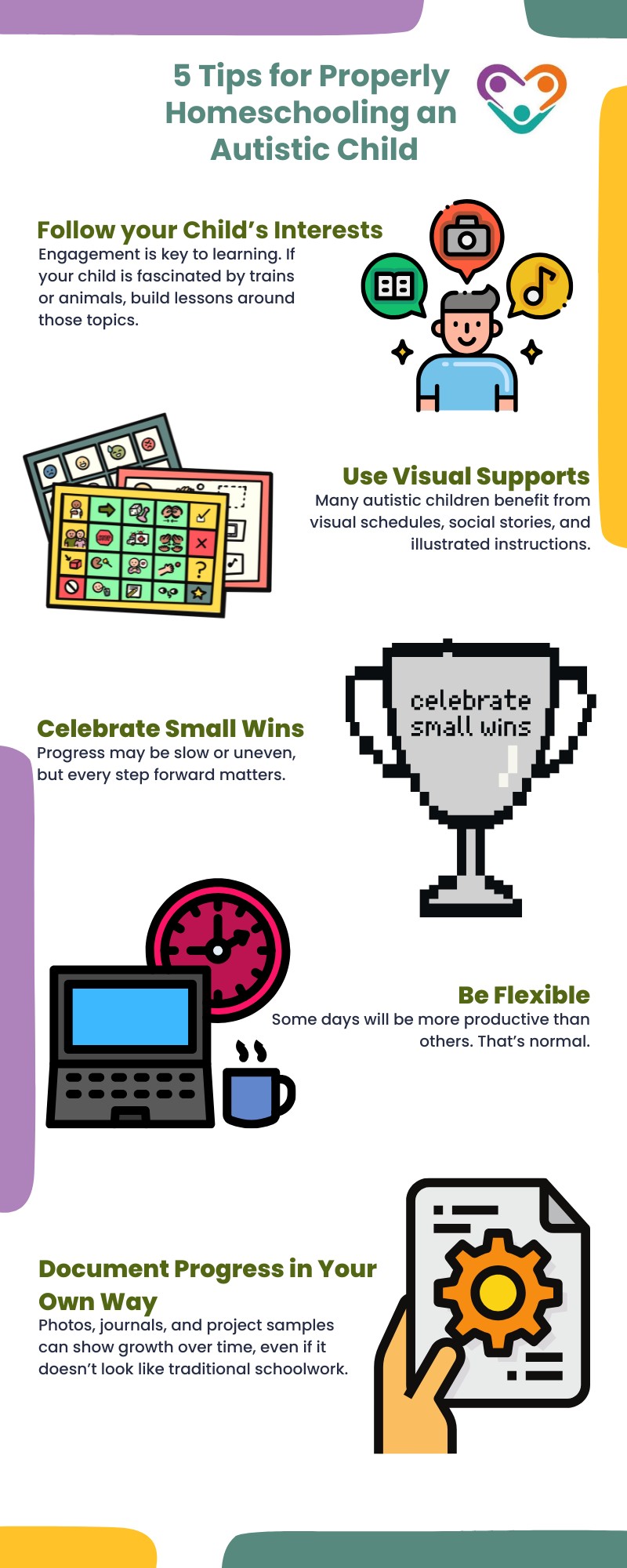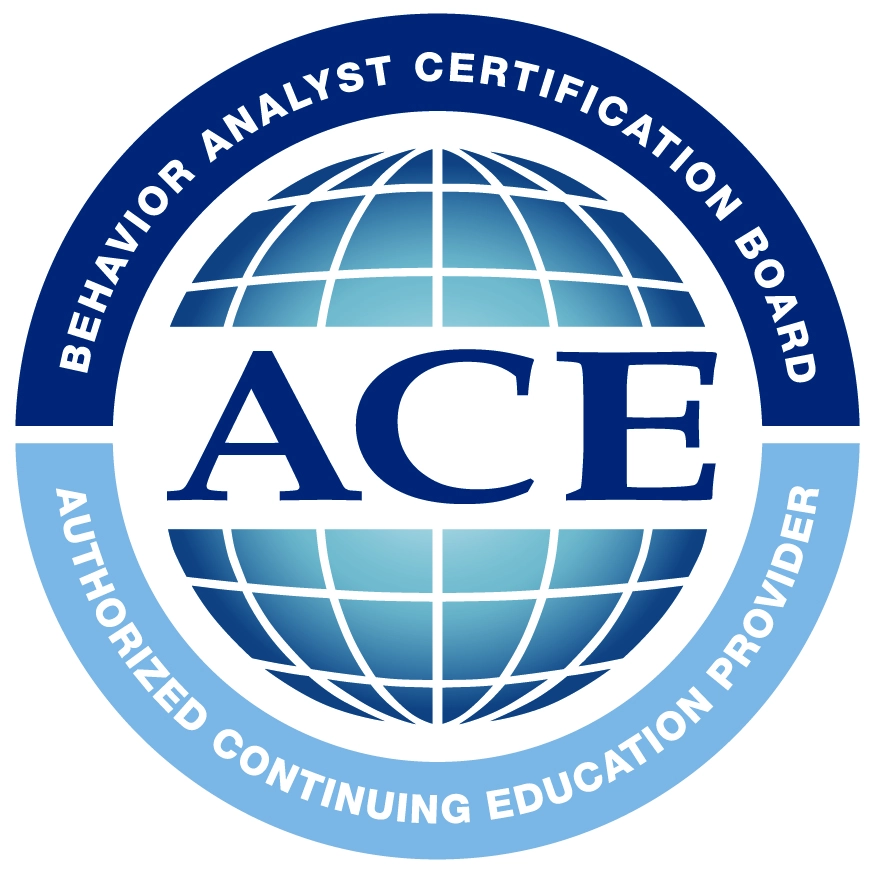Home education, often referred to as homeschooling, has become an increasingly popular option for families of autistic children. While traditional school settings work for many children, they can be challenging environments for others, especially those on the autism spectrum.
The unique sensory, social, and emotional needs of autistic children may not always be well met in mainstream schools, even with accommodations. As a result, many parents are choosing to bring learning into the home, tailoring education to nurture their child’s strengths and address their specific needs.
Here, we’ll explore what home education can look like for autistic children, how to get started, the potential challenges and rewards, and practical strategies to help you build an enriching and supportive learning environment at home.
Why Home Education?
Choosing to homeschool an autistic child is often rooted in the desire to provide a safer, more flexible, and more personalized learning experience. School environments can be overstimulating and unpredictable.
The bright lights, constant noise, social pressures, and fast-paced routines can be overwhelming for many autistic students.
At home, you can create a space where your child feels secure and understood. You’re able to move at their pace, build in sensory breaks, follow their interests, and reduce stress by minimizing transitions and unpredictability. This level of control can lead to more effective learning and emotional growth.
Another major benefit is the ability to use teaching methods that resonate with your child’s unique way of thinking. You’re not confined to a single curriculum or schedule. Whether your child thrives on structure or prefers spontaneous exploration, you can build a rhythm that suits them.
Before jumping into home education, it’s crucial to spend time understanding your child’s specific learning style, communication preferences, and sensory sensitivities.
Some autistic children are highly verbal, while others may communicate with gestures, devices, or not much at all. Some may have strong visual-spatial skills and love puzzles or building things, while others may be more musically or verbally inclined.
Take a close look at what energizes your child and what overwhelms them.
Do they need lots of quiet and calm to focus? Do they learn best with movement and hands-on activities? Are social interactions draining or enjoyable for them?
The answers to these questions will help you build a learning environment that supports rather than frustrates them.
How to Get Started
Before you begin homeschooling, you’ll need to check your state or country’s regulations. Homeschooling laws vary widely. Some areas require you to register with the local education authority or submit an Individualized Education Plan (IEP) or equivalent. Others may require regular assessments or portfolio submissions to demonstrate progress.
If your child previously had an IEP or was receiving services through the school, find out how that will be affected.
In some regions, you may still be able to access services like speech therapy or occupational therapy through the public school system, even if you’re homeschooling. In others, you may need to seek private providers.
Once the legal aspects are sorted, you can begin to craft your home education plan.
It’s worth noting that there is no one-size-fits-all method when it comes to homeschooling autistic children. Some families thrive with structured programs, while others take a more relaxed, child-led approach. The key is to match the learning style to your child’s needs and your family’s values.
Some popular homeschooling methods include:
- Eclectic homeschooling, where you blend various resources and styles to suit your child.
- Unschooling, which is interest-led and informal, emphasizing natural learning through life experiences.
- Charlotte Mason, which focuses on short, engaging lessons and nature study.
- Classical education, which emphasizes critical thinking and memorization in a three-stage process.
Many families of autistic children find success in blending methods, such as using structured workbooks for math but allowing more freedom in reading, science, or art.
You can purchase full curricula or create your own by combining books, online resources, and hands-on activities. Keep in mind that your curriculum should be flexible and able to grow with your child. What works today may not work next year — and that’s okay.

Building a Supportive Learning Environment
Home education doesn’t mean recreating a traditional classroom in your living room. Instead, it’s about designing a calm, organized, and predictable space that helps your child feel safe and ready to learn.
You might create a dedicated “learning corner” with supplies like pencils, paper, fidget tools, and visual schedules. If your child benefits from structure, having a daily routine chart can be very grounding.
On the other hand, if rigidity causes anxiety, a loose rhythm might work better.
It’s also important to consider sensory needs. Some autistic children do best in quiet, minimally stimulating environments. Others benefit from background music or the ability to bounce on a yoga ball while they work. Flexibility is key. If your child struggles to sit still, let them learn while walking, swinging, or building with their hands.
Breaks are equally important. Sensory breaks, snack time, or time outside can reset your child’s nervous system and help them come back to learning refreshed.
A common concern about homeschooling is socialization. While it’s true that school offers daily peer interaction, it’s also true that not all of those interactions are positive or meaningful, especially for autistic children who may struggle with bullying, misunderstandings, or sensory overload.
Homeschooling offers the chance to curate social experiences that are positive, comfortable, and developmentally appropriate. That might mean playdates with one or two friends, participating in local homeschool groups, joining online clubs, or signing up for community classes.
Rather than focusing on quantity, focus on quality. One meaningful friendship is often worth more than a classroom full of acquaintances.
Additionally, you can support social learning at home by role-playing situations, using social stories, and practicing conversation skills in low-pressure settings. For more guidance on supporting your child’s development, check out our article, “Identifying the Physical Signs of Autism in Children,” where we explore key indicators to help you better understand your child’s needs and provide the support they deserve.
When Things Don’t Go as Planned
Homeschooling, especially for an autistic child, is rarely linear. Some days will go smoothly, others will be tough. You might spend hours planning a lesson only for your child to reject it completely. That doesn’t mean you’ve failed; rather, it means you’re learning together.
Behavioral challenges, sensory overload, or emotional dysregulation may arise, especially if your child is tired, hungry, or anxious. In these moments, it’s okay to take a step back.
Learning can happen later. Focus on connection and co-regulation first. Home education gives you the freedom to prioritize your child’s mental and emotional health.
Don’t compare your homeschool journey to others. What works for another family might not suit yours. The beauty of home education is its adaptability.
Managing Your Own Well-Being
Caring for and educating an autistic child is deeply rewarding, but it can also be physically and emotionally draining. As a parent-educator, it’s essential to care for your own well-being. Burnout is real, and you can’t pour from an empty cup.
Make time for rest, connection, and activities you enjoy. Reach out to other homeschooling parents, especially those raising autistic children. Online communities, Facebook groups, or local meetups can offer both emotional support and practical advice.
If possible, share responsibilities with a partner, family member, or friend. Even small breaks can recharge your batteries. Self-care isn’t selfish; it’s a necessity.
To wrap things up, here are a few practical tips that can help you thrive as a homeschooling parent of an autistic child:

Final Thoughts
Home education for autistic children is not just a way to avoid the challenges of traditional schooling — it’s an opportunity to build something better. It allows for learning that is truly child-centered, responsive, and grounded in respect for neurodiversity.
Yes, it requires patience, creativity, and a willingness to adapt.
At the same time, it also offers unmatched rewards: the chance to see your child thrive in a space where they are understood, supported, and free to be themselves. That’s what we strive for every day at Golden Care Therapy — providing compassionate, individualized ABA therapy in New Jersey, Indiana, New York, Georgia, and Florida.
Our experienced therapists tailor each session to your child’s unique needs, using evidence-based strategies that foster real progress. We take pride in building strong relationships with families and creating an encouraging environment where children can flourish. If you’re ready to take the next step in your child’s journey, contact us today. Let’s work together to create a brighter future.
Sources:



